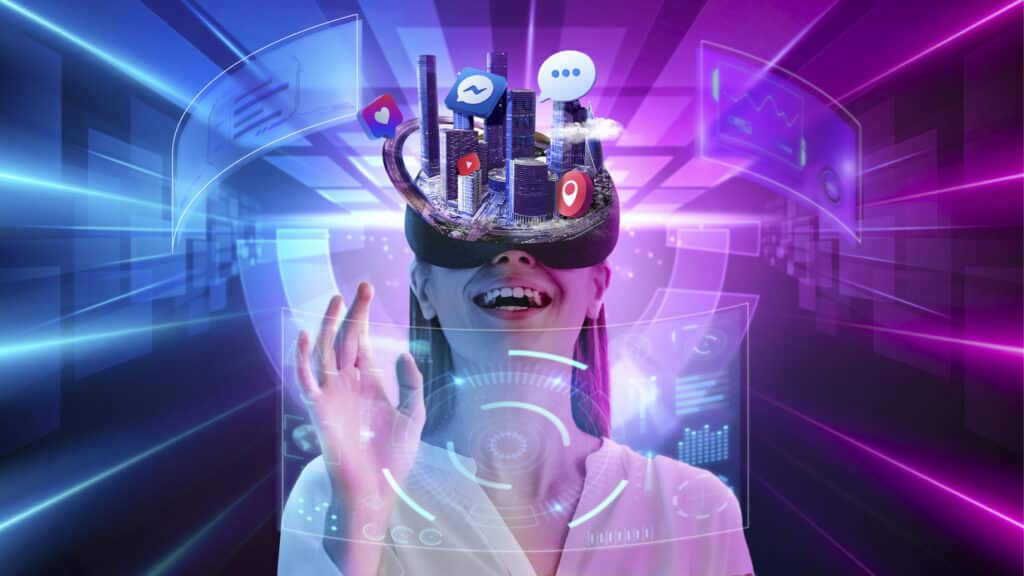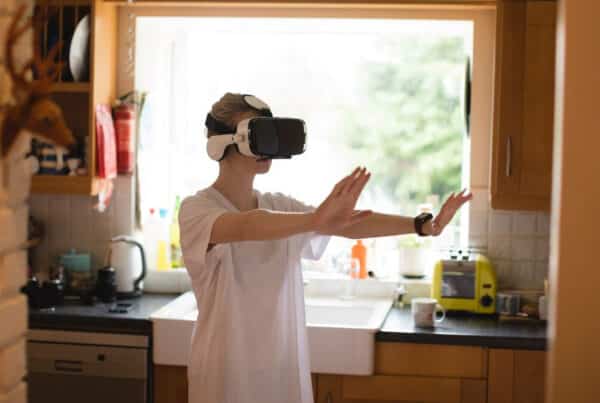
Introduction to the Metaverse and Virtual Tours
Imagine a world where the boundaries between the physical and digital realms blur, where reality and imagination seamlessly converge. This is the Metaverse – a captivating, ever-evolving digital landscape that is poised to redefine the way we interact, explore, and experience the world around us. At the heart of this transformative shift are virtual tours, an integral component of the Metaverse’s immersive ecosystem.
As the Metaverse continues to gain momentum, virtual tours are evolving beyond their traditional confines, transcending the limitations of the physical world and offering unprecedented levels of immersion and interactivity. By harnessing the power of cutting-edge technologies like Virtual Reality (VR), Augmented Reality (AR), and spatial computing, these virtual explorations are transporting users to captivating digital realms, where the lines between the real and the imagined are delightfully blurred.
What Makes Virtual Tours Immersive in the Metaverse?
At the heart of the Metaverse’s virtual tours lies the creation of lifelike, three-dimensional environments that captivate the senses. Through the strategic use of 3D modeling and spatial computing, these digital spaces are imbued with a palpable sense of depth, texture, and realism, allowing users to feel as if they are truly present within the virtual realm.
But it’s not just the visual elements that contribute to the immersive experience. The Metaverse’s virtual tours also place a strong emphasis on sensory immersion, seamlessly integrating auditory and haptic feedback to create a truly holistic experience. The integration of spatial audio, for instance, can transport users to the very heart of the action, while haptic technologies like vibration and force feedback can simulate the physical sensations of touch and movement.
Avatars, the digital representations of users within the Metaverse, play a crucial role in enhancing the sense of presence and interactivity. By allowing users to customize their virtual personas and engage with the environment through intuitive gestures and interactions, these digital embodiments foster a deeper sense of connection and investment in the virtual tour experience.
Technologies Powering Metaverse Virtual Tours
The Metaverse’s virtual tours are made possible by a trifecta of cutting-edge technologies: Virtual Reality (VR), Augmented Reality (AR), and Mixed Reality (MR). These immersive platforms, each with their unique capabilities, work in tandem to create the seamless, captivating experiences that define the Metaverse.
VR headsets, in particular, have become essential tools for enhancing the immersion of Metaverse virtual tours. By fully immersing users in a digital environment, these devices can transport them to far-flung destinations, allowing them to explore and interact with virtual spaces as if they were physically present.
Complementing VR’s immersive capabilities are the spatial and contextual enhancements offered by AR and MR technologies. By blending digital elements with the physical world, these technologies can overlay virtual tours with interactive hotspots, informative annotations, and even holographic representations, creating a truly hybrid experience that bridges the gap between the real and the virtual.
Underpinning these immersive technologies are omnidirectional cameras, which play a crucial role in capturing the 360-degree environments that form the foundation of Metaverse virtual tours. These specialized devices, with their wide-angle lenses and advanced stitching algorithms, can transform physical spaces into captivating digital realms, ready to be explored and experienced by users.
Creating Immersive Virtual Experiences
Crafting truly immersive virtual tours within the Metaverse requires a multifaceted approach that combines technical expertise with creative vision. At the heart of this process is the creation and design of virtual environments that seamlessly blend realism with imagination.
The choice of platform is also a crucial consideration, as the Metaverse encompasses a diverse ecosystem of virtual worlds, each with its own unique features and capabilities. Platforms like Decentraland, The Sandbox, and Roblox offer a range of tools and resources for building and hosting virtual tours, catering to a wide array of user needs and preferences.
But the Metaverse’s virtual tours are not just the product of top-down design; they also thrive on user-generated content and co-creation. By empowering individuals and communities to contribute their own virtual experiences, the Metaverse fosters a dynamic, ever-evolving landscape of exploration and discovery.
Applications of Virtual Tours in the Metaverse
The Metaverse’s virtual tours are poised to transform a wide range of industries, from travel and tourism to corporate events and educational environments. In the realm of virtual travel, for instance, users can embark on immersive explorations of far-flung destinations, experiencing the sights, sounds, and even the ambiance of a location as if they were physically present.
For businesses, the Metaverse offers a new frontier for hosting virtual meetings, workshops, and training sessions, where participants can gather in shared digital spaces and engage in collaborative activities as if they were in the same physical room. Similarly, in the education sector, virtual tours can transport students to historical sites, scientific laboratories, or cultural landmarks, enriching their learning experience and fostering a deeper connection with the subject matter.
Challenges and Limitations
As with any emerging technology, the Metaverse’s virtual tours face a range of challenges and limitations that must be addressed. Technical hurdles, such as device compatibility and accessibility issues, can hinder the widespread adoption of these immersive experiences. Additionally, the digital divide, where access to the necessary hardware and software may be unequal, highlights the need for inclusive and accessible virtual tour solutions.
Ethical considerations also come into play, as the Metaverse raises concerns about data privacy, user behavior regulation, and the potential for misuse or exploitation. Navigating these complex issues will be crucial in ensuring that the Metaverse’s virtual tours remain safe, secure, and beneficial for all.
Future Trends and Innovations
As the Metaverse continues to evolve, the future of virtual tours promises to be nothing short of captivating. Emerging technologies like Non-Fungible Tokens (NFTs), blockchain, and decentralized applications are poised to enhance the virtual experience, offering new avenues for digital ownership, monetization, and seamless cross-platform integration.
Furthermore, the integration of artificial intelligence and machine learning could revolutionize the way virtual tours are created and experienced, enabling personalized recommendations, adaptive environments, and even the incorporation of real-time data to create truly dynamic and responsive digital spaces.
Getting Started with Virtual Tours in the Metaverse
Embracing the Metaverse’s virtual tours is an exciting prospect for businesses, organizations, and individuals alike. The first step is to choose the right platform and technology that aligns with your specific needs and goals. Whether you opt for a centralized Metaverse platform or a decentralized, community-driven virtual world, the key is to select a solution that offers the features, tools, and support necessary to bring your virtual tour vision to life.
Once the platform is selected, the next step is to dive into the process of creating your virtual tour. This may involve 3D modeling, environment design, user interface development, and the integration of immersive technologies like VR and AR. Throughout this process, it’s essential to keep the user experience at the forefront, ensuring that your virtual tour is not only visually stunning but also engaging, intuitive, and memorable.
Conclusion
The Metaverse’s virtual tours are poised to redefine the way we explore, interact, and experience the world around us. By harnessing the power of cutting-edge technologies and embracing the boundless potential of the digital realm, these immersive experiences are opening up new frontiers of discovery, learning, and collaboration.
As the Metaverse continues to evolve and expand, the opportunities for businesses, organizations, and individuals to harness the transformative potential of virtual tours are endless. Whether you’re a seasoned explorer or a newcomer to the digital landscape, the time is ripe to embrace the Metaverse and unlock the captivating world of immersive virtual tours.
Step into the future with immersive virtual tours in the metaverse! Explore, interact, and engage like never before with cutting-edge VR technology. Perfect for real estate, travel, and education. Contact us today to learn how you can create stunning virtual experiences and bring your world into the metaverse!




